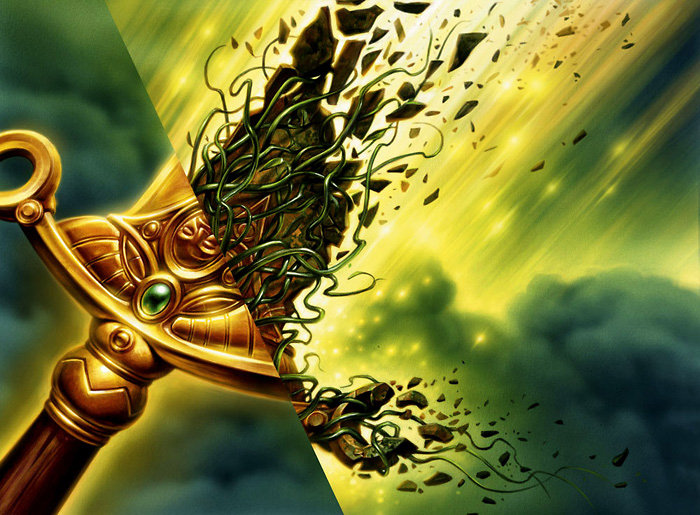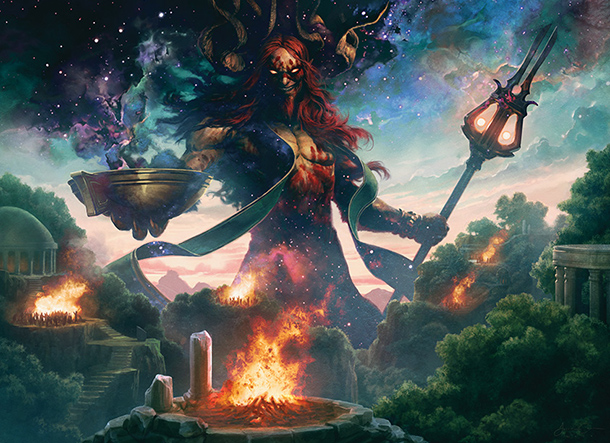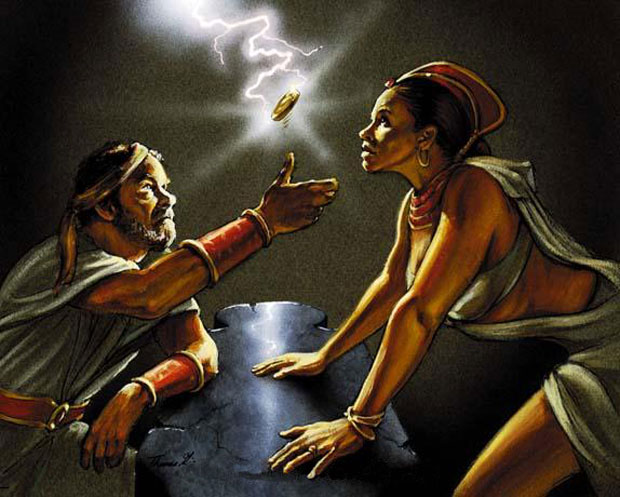By: Travis Allen
Think back to last March. If you were in school, it probably involved a spring break. Exams and the subsequent vacation were visible on the horizon. The weather was breaking and the color seemed to be seeping back into the world. Spring was just barely upon us, and with it the promise of another vital summer.
Come June, the sun was finally up before you were. Warm rays on your face stirred you out of bed. Your Facebook calendar seemed more alive. Weekends were spent at beaches and on bike rides. Friday and Saturday nights were spent on dates, at house parties, or lounging on patios during cocktail hour. Vacations were taken, camping trips embarked on, picnics eaten.
Or maybe you played Call of Duty all summer in an air-conditioned basement because you hate living life.
Either way, the summer is spent doing a lot of things. One thing it is frequently not spent doing is playing Magic. Making time for PTQs and IQs is easy in the dreary February months when there’s four hours of sunlight and a total lack of desire to be outside. But when it’s light until 9pm and it seems like every weekend there’s a thrilling activity to partake in, those three and four hour car rides to sit in a convention hall seem much less appealing.
The reason I’m waxing poetically about the exploits of summer is that they will have a bearing on card prices this year, and to what extent I’m still trying to come to understand. This year marks the first time since the summer of 2008, six years ago, that we will not have a Standard PTQ through the warmest months of the year.
Typically, the Standard PTQ season has occurred throughout the majority of the summer. Cards in the spring set were immediately Standard relevant, as PTQs began shortly after their release. As the fall season and the rotation of the senior set drew near, soon-to-rotate cards held value a little better than one would expect due to this continued demand. The grinder wasn’t happy about having to hold onto playsets of Thragtusk or Geist of Saint Traft or Huntmaster of the Fells, but as they were needed to play in PTQs, he or she bit the bullet and held onto them while they slowly slipped in value. The truly dedicated may have even kept more than one or two decks available, choosing to have access to most playsets of constructed staples as opposed to only a single deck.
This constructed demand helps ease the senior set out amidst a majority of players beginning to divest from rotating staples. Once March and April roll around, many players are aware of the fact that their senior block cards will soon be leaving the format. They begin selling and trading any additional cards they don’t absolutely need, so as to reduce the impact of rotation to their collection’s value. This guaranteed loss in value of cards is mitigated by a group of players continuing to need them to play in PTQs. Stores still have some number of players they can sell rotating cards to and players figure they can find someone, somewhere that will trade for them.
With the changing of the schedule, come March the Standard PTQ season is over. What’s left to keep RtR cards afloat? A quick glance at the GP schedule shows a whopping seven Standard Grand Prixs between March 9th and September, only three of which are in the US. It also appears there will be roughly twenty SCG opens, and then whatever IQs they happen to hold. Most players will be unable to attend a single one of those GPs, and there will be maybe one to two opens close enough to reasonably travel to.
Imagine it’s March 9th. Between now and September, there are no Standard GPs for you to attend, and a single open. The only other Standard events are your local FNM. What’s your incentive to hold onto Rav block staples?
When I started writing this article, I wasn’t sure what to expect to happen to the demand. Sure you were losing the PTQ season, but there would be enough events to mostly keep prices on a slow slide downwards, not an abject plummet, right? I’m not as convinced anymore. The only place the average player is going to be playing Standard is at FNM, and with all the alternatives to Magic the summer brings with it, even weekly attendance there is suspect. On top of that, why hold a $40 playset of Desecration Demons just to goof around at FNM? There’s a strong incentive to sell them off for booze money and play a janky nearly-block deck until rotation occurs.
It’s hard not to see the closest thing possible to a freefall of RtR prices in March. With barely anything left to support demand for the cards, I doubt most players will consider it worth holding onto cards like Nightveil Specter and Blood Baron. With thousands on thousands of players ready to ditch playsets, prices will drop like a lead weight. March 9th won’t be all doom and gloom, though. Theros cards won’t be subject to this, and with the block Pro Tour around the same time, there may even be a slight uptick in demand. Players shifting RtR cards will want to trade them into something, and Theros will be a good choice. Additionally, Modern staples won’t be quite as vulnerable to the drop. Voice of Resurgence, while probably not a $35-$40 card anymore. will hold value along with the shocks. Those of us with long-term aspirations can treat this as an opportunity to score Modern and Casual growers on the cheap, especially if people are willing to trade them at below-market value just to get rid of them.
I can’t say for certain that prices will react this way, as this is all just an educated guess at this point. Perhaps FNM demand will prove itself quite worthy, and cards will hang on longer than anticipated. That’s not where I’d be putting my money though.
One last note before I go: The recent counterfeit news has been all over the mtgverse, from Reddit to Rosewater’s Tumblr to SCG. Most with a pulpit have been proclaiming that these are bad news across the board for Magic players. The long and short of it is that while counterfeits make cards cheap in the short term, they also mean the only place you’ll be able to play Magic a year later is at home, since every store will have closed shop.
However, there seems to be a vocal group on the internet that are championing these facsimiles as some sort of Robin Hood, rescuing the oppressed proletariat from the bourgeoisie WOTC and their ostentatious cardboard. I firmly reiterate that there is nothing further from the truth. Everyone needs to set their frustrations with the cost of Magic aside, both legitimate and illegitimate, for the good of the game and the community. Magic is full of self-professed geniuses. It’s time for all of you that consider yourselves bastions of free thinking and enlightenment to put your ideals into practice and be willing to consider information that may force you to reevaluate your worldview.
Counterfeits are bad for Magic. If you don’t believe me, go read the numerous articles that have been written about it. If you do believe me, go tell someone that doesn’t.



